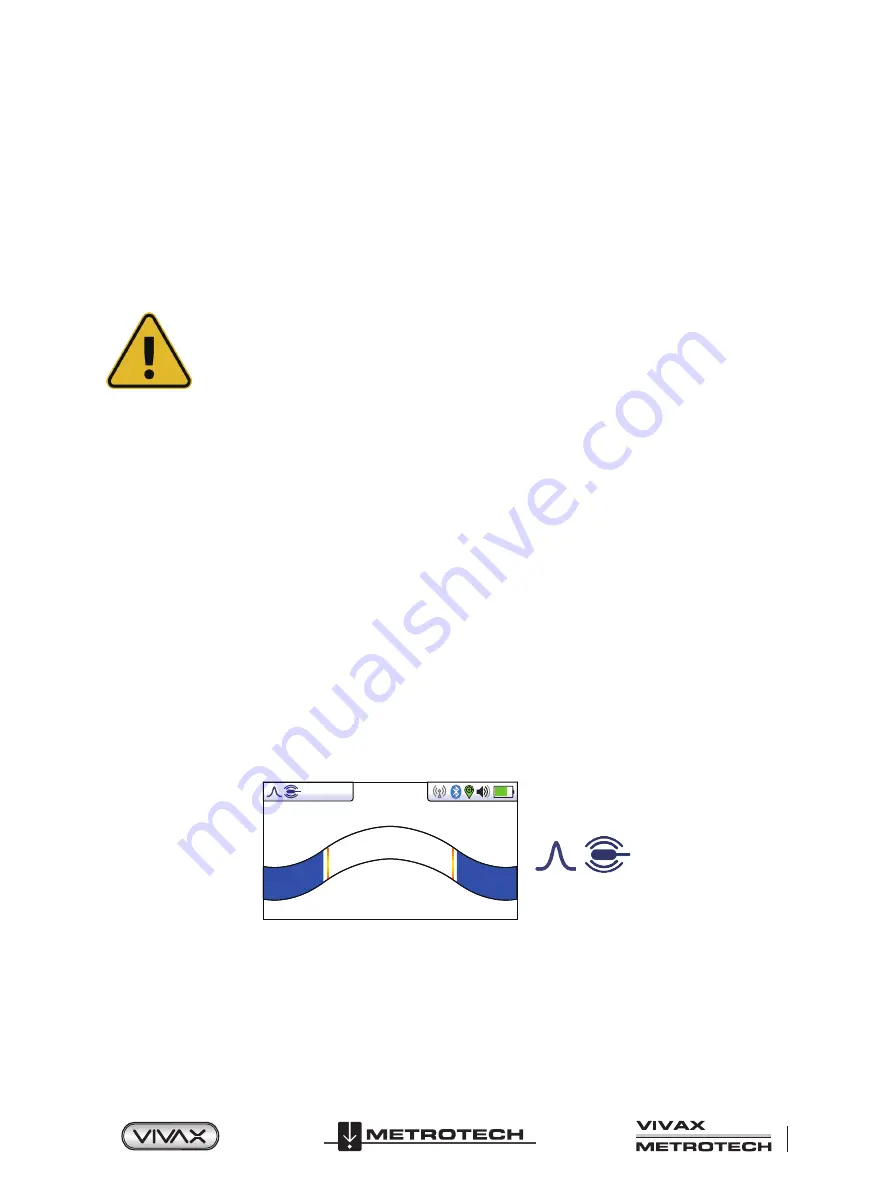
Page 19 of 44
™
2 vLoc3-9800 Receiver
• Measuring the signal current.
1. Pinpoint the line as for measuring depth.
2. Briefly press the “
i
” pushbutton and the depth and current will be displayed.
The further from the transmitter the less signal will radiate from the buried line. By locating at several points along the buried
line you will identify an approximate rate of signal loss - beware that where a pipe or cable divides the signal will reduce more
rapidly.
If the signal current at the point you are pinpointing is different from the trend, check to confirm that the correct cable is located.
To do this, return to a point where the current is as expected and very carefully trace the line to the new location, regularly
checking that the current has not changed significantly. A sudden change in current may be caused by straying onto an adjacent
line.
WARNING
Never mechanically dig over the path of a buried pipe or cable. Always dig carefully and call before
you dig.
2.17 Distorted Fields
The accuracy of measurements is affected by the distortion of the signal being radiating from the target line. Distortion can be
caused by stray signal currents leaking onto other lines or when the target line takes a sudden different course. One way to
check for a distorted signal is to follow the procedure below:
To check if other radiated fields are distorting the signal. First locate the cable in either mode.
• Place the locator on the ground and take a depth reading by pressing the “i” pushbutton.
• Note the result and then raise the locator approximately 1.5ft
(0.5m)
.
• Take another depth reading and check the depth has increased by approximately this amount.
• If the depth has not increased by the correct amount, treat the results with caution.
2.18 Sonde Location Mode - Locating Non-metallic Pipes or Ducts
A Sonde is typically used for locating non-metallic pipes or ducts or the camera end of a sewer inspection camera. Low-
frequency versions (512Hz/640Hz) can transmit through some metallic pipes such as cast iron pipes which is why they are
frequently used with sewer inspection cameras.
Sonde Location is a Peak mode which means that the bar graph and audio will grow when approaching the sonde and at their
maximum when over the sonde.
Locating Sondes method:
1. Switch on the Sonde by connecting the battery. Connect it to the pushrod and place it at the start of the pipe run.
2. Switch on the vLoc3-9800 and select Sonde mode using long presses on the “Return” button. The Sonde icon will now be
visible on the screen.
24dB
33kHz
518
Manual
1.33m
3. Position the vLoc3-9800 above the Sonde as indicated below: (The rotational orientation of the receiver is 90° to that used
when line locating).






























